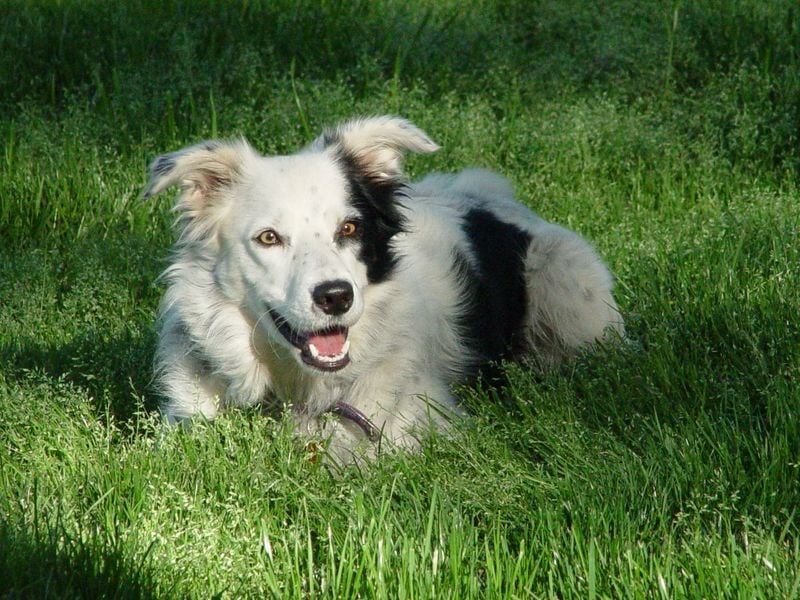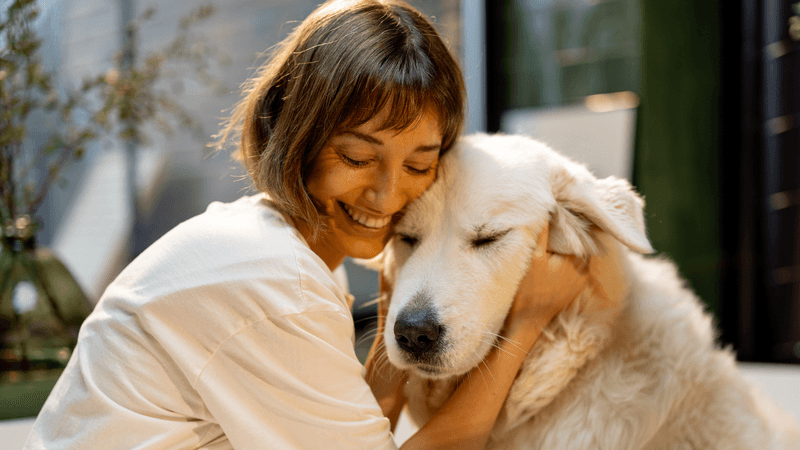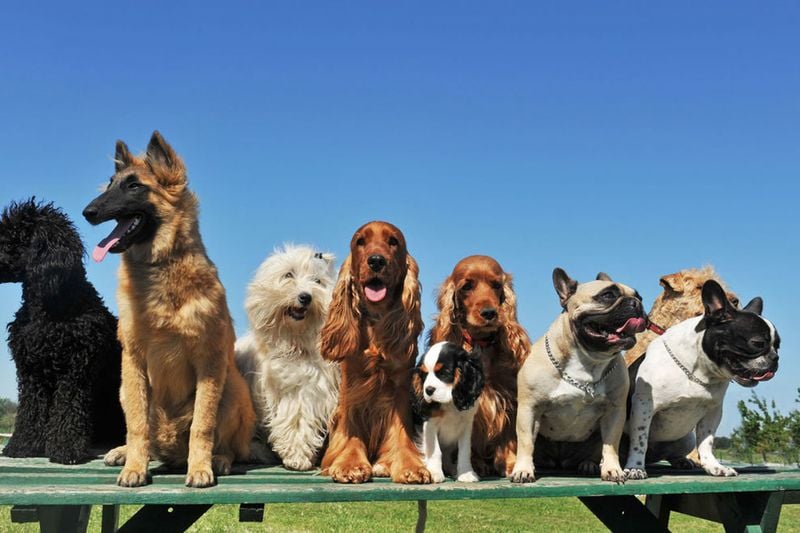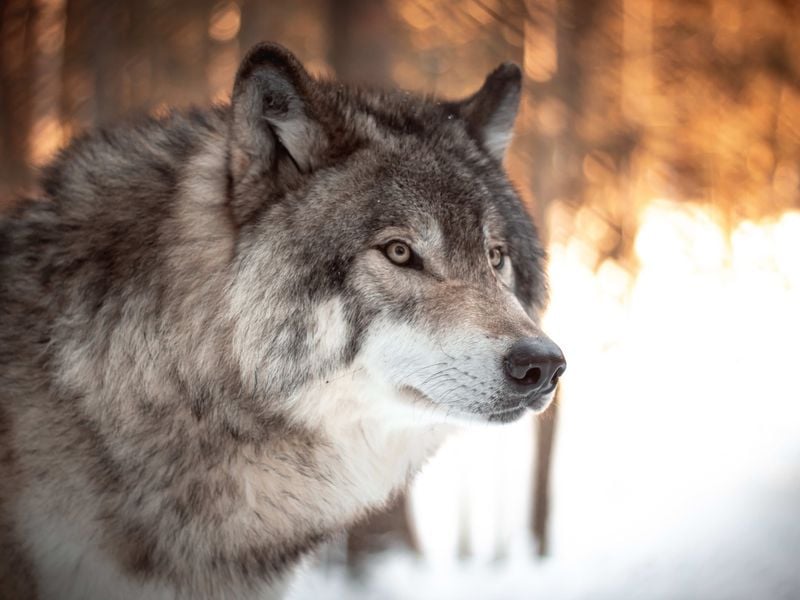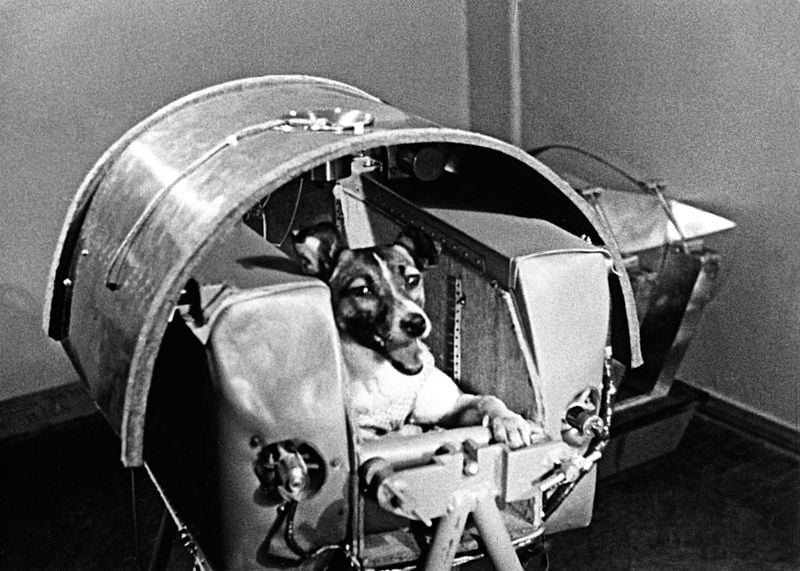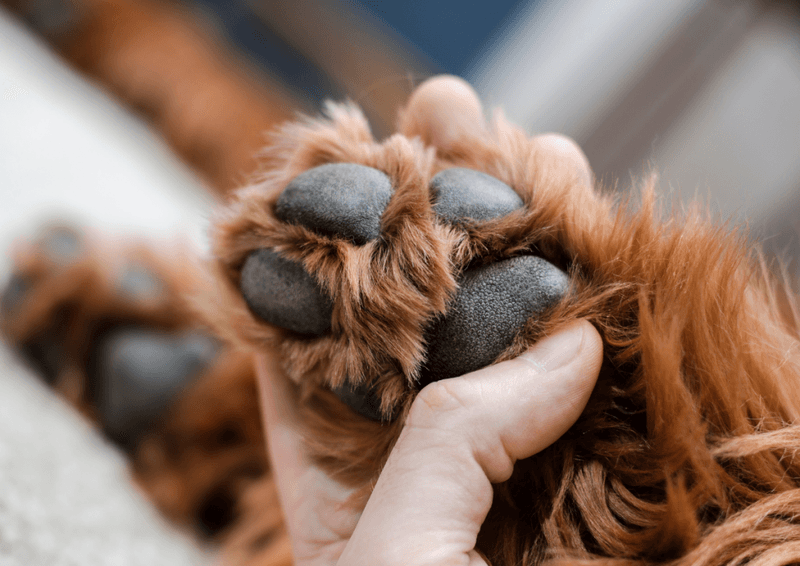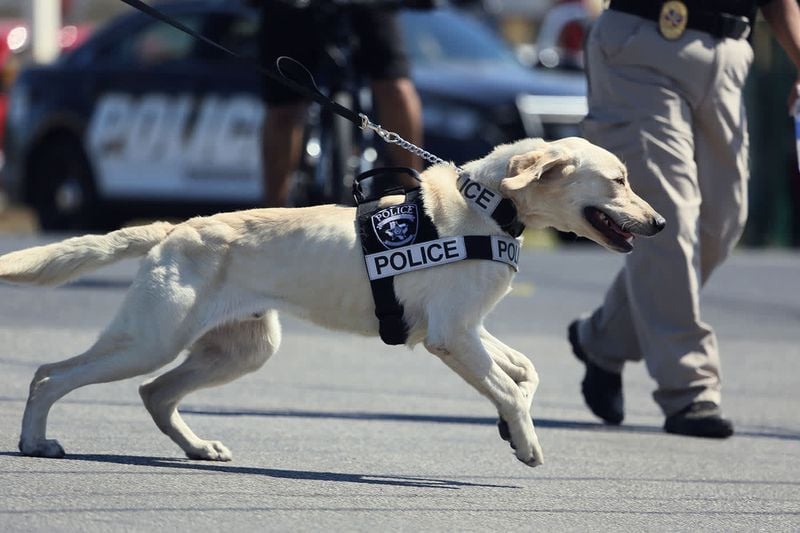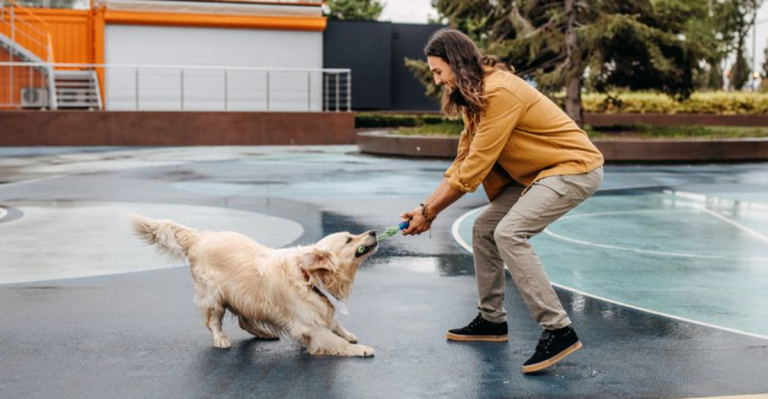17 Incredible Dog Facts You’ll Wish You Knew Sooner
Dogs have been our loyal companions for thousands of years, but even the most devoted dog lovers may not know just how incredible these animals truly are. Behind those wagging tails, playful barks, and soulful eyes lies a world of surprising science, hidden talents, and fascinating history.
Far more than just household pets, dogs possess superpowered senses, emotional intelligence, and instincts that have allowed them to thrive alongside humans in every corner of the globe. They’ve worked as hunters, herders, healers, rescuers, and even astronauts. Some breeds can sniff out diseases or detect natural disasters before they happen. Others can understand hundreds of words, perform complex tasks, or even recognize themselves in mirrors.
Whether you’ve had dogs all your life or simply admire them from afar, there’s always more to learn about these extraordinary creatures. The facts ahead aren’t just fun trivia—they reveal the deeper intelligence, adaptability, and wonder that make dogs so deserving of the title “man’s best friend.”
Get ready to see your furry friend in a whole new light. These 17 amazing facts about dogs will surprise you, make you smile, and might even make you love them a little more—if that’s possible.
1. Canine Vocabulary Wizards
The average dog can understand around 250 words and gestures – roughly equivalent to a 2-year-old child! Border Collies typically rank among the highest achievers, with some exceptional dogs learning over 1,000 words.
Daily training sessions of just 5-10 minutes can dramatically expand your dog’s vocabulary. Start with basic commands and gradually introduce more complex terms. Remember to use consistent words paired with clear hand signals.
Most impressive is how dogs can learn words through inference – hearing a new word once and understanding it refers to a new object they haven’t seen before.
2. Super-Powered Sniffers
Your dog’s sense of smell is a biological marvel – up to 100,000 times more powerful than yours! This extraordinary ability comes from having up to 300 million olfactory receptors compared to our mere 6 million.
Dogs actually process smells in a dedicated portion of their brain that’s proportionally 40 times larger than ours. This explains why they can detect diseases like cancer, diabetes, and even COVID-19 before medical tests.
When your pup sniffs seemingly random spots during walks, they’re actually reading complex “scent messages” left by other animals – like checking their neighborhood social media!
3. Sound Detectives Extraordinaire
Your furry companion can hear frequencies between 40 Hz and 60,000 Hz – while humans top out at just 20,000 Hz. This remarkable ability explains why dogs come running at the distant sound of a treat bag opening or react to thunderstorms before you hear anything.
Those adorable ear movements aren’t just cute – they’re functional! Dogs have 18 muscles controlling each ear, allowing them to pinpoint sound sources with incredible precision.
Sound sensitivity varies by breed. Hounds like Basset Hounds and Bloodhounds have especially long ear canals that funnel sounds directly to their eardrums, enhancing their already impressive hearing abilities.
4. Pawprint ID System
Just like human fingerprints, every dog’s nose print is completely unique! The pattern of ridges and creases forms a one-of-a-kind identifier that could theoretically be used for identification purposes.
Some kennel clubs have actually begun using nose prints as a form of canine ID. The Canadian Kennel Club has been recording nose prints since 1938 as a reliable method to identify registered dogs.
You can even capture your dog’s nose print at home using food-safe ink pressed gently against paper. This distinctive feature is just one more way our canine companions are remarkably individual – each with their own special “signature” right on their snout!
5. Natural Stress Relievers
Running your hand along your dog’s fur doesn’t just make them happy – it actually lowers your blood pressure too! Studies show that just 10 minutes of petting a dog decreases cortisol (stress hormone) levels while boosting oxytocin, dopamine, and serotonin – your body’s feel-good chemicals.
This therapeutic effect explains why dogs are increasingly used in hospitals, nursing homes, and trauma recovery settings. The physical response to petting a dog is so powerful that it can even help normalize blood pressure in people with hypertension.
Morning cuddle sessions with your pup aren’t just enjoyable rituals – they’re legitimate health interventions that benefit both of you!
6. Global Canine Companions
Dogs have integrated themselves into virtually every human culture on Earth! From the nomadic Bedouin tribes who rely on Salukis for hunting to the Tibetan Mastiffs guarding monasteries high in the Himalayas, canines have adapted alongside humans in every environment imaginable.
Archaeological evidence shows this partnership dates back at least 14,000 years across six continents. The remarkable adaptability of dogs has resulted in over 340 recognized breeds today, each developed for specific purposes within their cultural contexts.
Even in modern urban environments where working roles have diminished, dogs maintain their cultural significance as beloved family members – proving their unmatched ability to evolve alongside human society.
7. Wolf Ancestry Hidden in Plain Sight
Behind your cuddly companion’s eyes lies the genetic legacy of wolves! DNA studies confirm all dogs descend from gray wolves, with the split occurring somewhere between 15,000-40,000 years ago.
Remarkably, dogs share 99.9% of their DNA with wolves despite their dramatically different appearances and behaviors. This transformation from predator to companion represents one of the most successful evolutionary partnerships in history.
Your dog still exhibits many wolf-like behaviors – from circling before lying down (originally to flatten grass) to howling at sirens (mistaking them for distant pack calls). Even that adorable head tilt when you speak is believed to be an inherited trait from their wolf ancestors trying to locate sounds more precisely!
8. Spotless Dalmatian Puppies
Those iconic black spots that make Dalmatians instantly recognizable? They’re completely absent at birth! Dalmatian puppies enter the world with pristine white coats, developing their distinctive spots gradually during their first weeks of life.
The spots appear as the puppies’ skin cells produce melanin, typically becoming visible around 10 days after birth. By the time they reach about 4 weeks old, their spotted pattern is well-established, though spots continue developing until they’re approximately 7 months old.
Each Dalmatian’s spot pattern is entirely unique – nature’s way of giving these dogs their own special signature. This fascinating developmental process explains why the puppies in Disney’s “101 Dalmatians” start without their trademark spots!
9. Canine Cosmonauts
Long before humans ventured into space, brave dogs paved the way! The Soviet Union launched dogs into orbit starting in the 1950s, with Laika becoming the first animal to orbit Earth in 1957 aboard Sputnik 2.
These canine cosmonauts underwent extensive training, including being confined in small spaces and exposed to loud noises to prepare them for rocket conditions. While Laika unfortunately perished in space, later missions successfully returned dogs to Earth.
The most famous space-traveling pups were Belka and Strelka, who spent a day in orbit before returning safely in 1960. Strelka later had puppies, and one was gifted to President Kennedy’s daughter Caroline – connecting Soviet and American history through one extraordinary space dog’s legacy!
10. Paw-Only Perspiration
Ever noticed those damp paw prints on a hot day? That’s because dogs only have sweat glands in their paw pads! Unlike humans who sweat across their entire body, dogs regulate temperature primarily through panting.
When a dog pants, moisture evaporates from their tongue, lungs, and the lining of their mouth, cooling the blood in their tongue. This cooled blood then circulates throughout their body, effectively lowering their overall temperature.
Those specialized sweat glands in their paws (called eccrine glands) serve double duty – they help with grip on various surfaces while providing minimal cooling. This limited sweating ability explains why dogs are especially vulnerable to heat stroke and why cooling mats and shade are so important in hot weather.
11. The Silent Basenji
Known as “the barkless dog,” the Basenji doesn’t actually bark like other canines! Instead, these unique dogs produce an unusual yodel-like sound called a “baroo” – a combination of a howl and a chortle that sounds almost like human laughter.
This distinctive trait stems from their unusual larynx shape, developed over thousands of years in the dense forests of Central Africa. Hunters prized their silence when stalking game.
Despite their quiet reputation, Basenjis aren’t completely mute. They communicate through an array of sounds including whines, growls, and their famous yodel. Many Basenji owners report their dogs are quite vocal – just not in the traditional barking way most people expect from dogs!
12. Canine Dreamers
Those twitching paws and soft woofs while your dog sleeps aren’t random – your furry friend is actually dreaming! Scientists have discovered dogs experience REM sleep just like humans, complete with similar brain wave patterns during this dreaming phase.
When you notice your dog’s legs “running” during sleep or making small vocalizations, they’re likely reliving their day’s adventures or processing experiences. Small dogs tend to dream more frequently than larger breeds, with episodes occurring approximately every 10 minutes compared to every 90 minutes in larger dogs.
Puppies and senior dogs dream more often than middle-aged dogs – mirroring human sleep patterns where infants and elderly people spend more time in REM sleep than adults.
13. Ancient Partnership
The bond between humans and dogs stretches back over 14,000 years – making it one of the longest-running partnerships between two species in history! Archaeological evidence from a burial site in Germany shows a man buried alongside his dog, suggesting deep emotional connections existed even in prehistoric times.
DNA analysis suggests domestication may have begun even earlier, possibly 20,000-40,000 years ago. This predates agriculture, meaning dogs were our companions before we even settled down to farm!
This ancient relationship has literally shaped both species’ evolution. Humans with canine partners had survival advantages in hunting and protection, while dogs gained consistent food sources and shelter – a mutually beneficial arrangement that has stood the test of millennia.
14. Canine Career Specialists
Dogs can master complex tasks that would challenge even highly trained humans! Beyond basic commands, specialized working dogs perform incredible feats like detecting cancer cells with 97% accuracy or finding survivors buried under earthquake rubble.
Military working dogs can distinguish between friendly and threatening individuals and even parachute from aircraft with their handlers. Service dogs for people with disabilities can learn to retrieve specific items, open doors, turn lights on/off, and even alert to oncoming seizures minutes before they occur.
The average service dog knows approximately 40-60 commands, while elite working dogs may master over 100 distinct tasks. Their remarkable intelligence combined with their desire to please makes dogs unmatched partners for complex work.
15. Marathon Champions
Greyhounds can reach speeds up to 45 mph in short bursts – making them the fastest dog breed. But their true superpower emerges in endurance races, where they can actually outrun cheetahs over long distances!
While cheetahs are sprinters that exhaust after about 30 seconds at top speed, Greyhounds maintain impressive speeds for much longer durations. This remarkable stamina comes from their specialized physiology – large hearts, high red blood cell counts, and lean muscle mass optimized for efficient oxygen use.
These natural marathon runners have been clocked maintaining speeds of 35 mph for distances over a mile. Their streamlined bodies create minimal wind resistance, and their unique “double-suspension” gallop allows them to cover maximum ground with minimal energy expenditure.
16. Taste Bud Minimalists
Your dog’s enthusiastic eating habits might surprise you, considering they have only about 1,700 taste buds compared to your 9,000! This explains why they’re less discriminating about flavors – their sense of taste is roughly one-sixth as sensitive as yours.
Dogs compensate for fewer taste buds with their exceptional sense of smell, which plays a much bigger role in how they experience food. Their taste preferences also differ from ours; they have special receptors specifically for meaty flavors (umami) but fewer for detecting sweetness.
Interestingly, dogs can taste water – something humans cannot do. They have special taste receptors on the tips of their tongues that activate when drinking, making water a distinct flavor experience for them!
17. Limited Color Vision
Your dog doesn’t see the world in black and white as once believed – they actually perceive colors similar to a human with red-green colorblindness! Dogs have only two types of color-detecting cone cells in their retinas (compared to our three), allowing them to see primarily blues and yellows.
Reds and greens appear as different shades of gray to your canine companion. This explains why blue or yellow toys are often more engaging to dogs than red ones – they actually stand out more in their visual field.
What dogs lack in color perception, they make up for with superior motion detection and night vision. Their eyes contain more motion-sensitive cells and a reflective layer that improves low-light visibility, making them excellent at spotting moving objects even in dim conditions.

